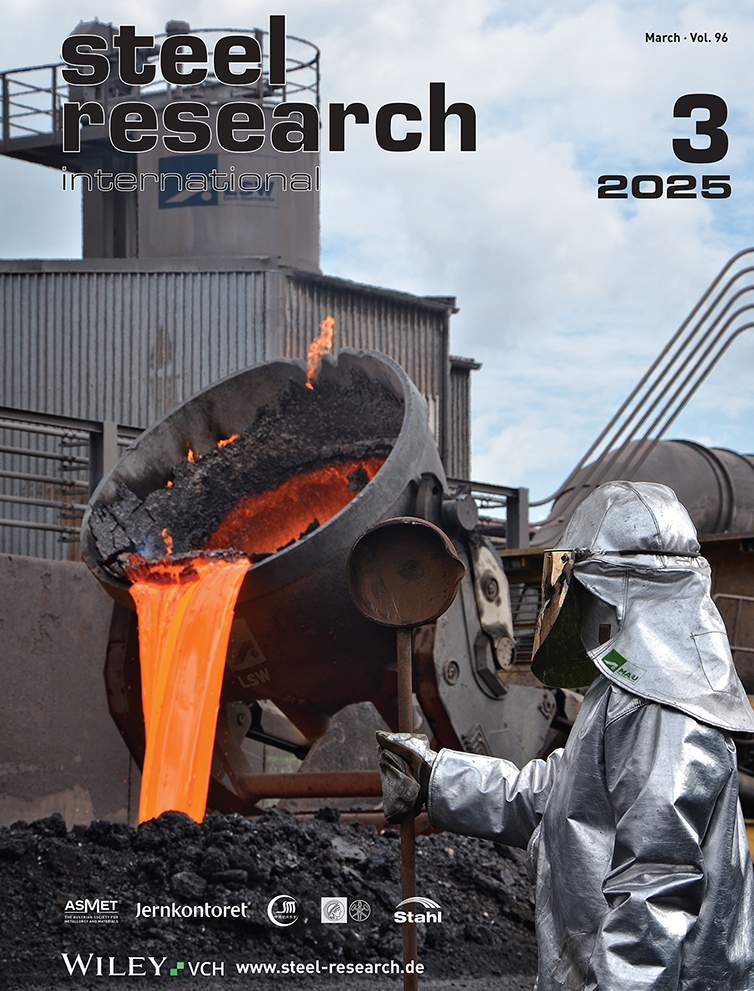Microstructure and Precipitation of a Cu–Ni Alloyed Medium-Mn Duplex Low-Density Steel Prepared by Near-Rapid Solidification
Abstract
A Cu–Ni-alloyed medium-Mn duplex low-density steel with a composition of Fe–9Mn–5.5Al–0.3C–3Ni–1.5Cu (wt%) is prepared by near-rapid solidification. The microstructure features of the alloy under as-cast, cold-rolling, and heat treatments are studied. The effect of Cu- and Ni-alloying elements on the microstructure and precipitates is discussed. In the results, it is shown that martensite and nanoscale precipitates are found in the microstructure of near-rapid solidification. The enrichment of Cu is found at the phase boundaries of austenite and ferrite. A large number of annealing twins are present in the microstructure of cold-rolled and annealed alloy. In the first principles and thermodynamic calculations, it is shown that Ni element is capable to shorten the nucleation incubation time of Cu precipitates. In addition, the interface segregation of Ni and Al elements reduces the adhesion work of Cu particles with the matrix. Both Cu and Ni elements increase the stacking fault energy of the alloy, which is increased from 37.3 to 44.2 mJ m−2. The contributions of precipitation strengthening and twinning strengthening to the strength of the alloy are 72 and 86 MPa, respectively, while the dominant contribution of dislocation hardening to the strength is 326 MPa.
Conflict of Interest
The authors declare no conflict of interest.
Open Research
Data Availability Statement
The data that support the findings of this study are available from the corresponding author upon reasonable request.




